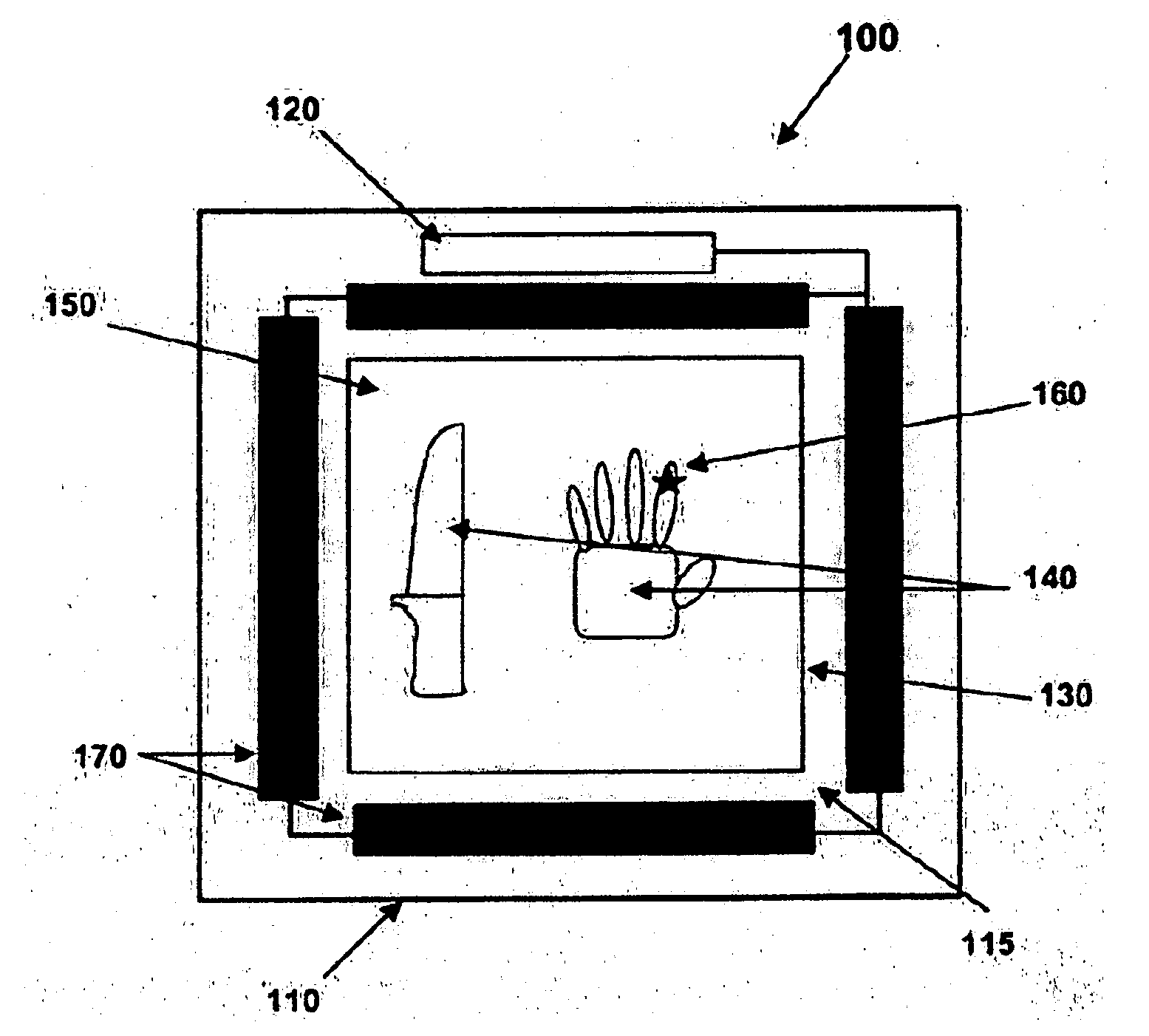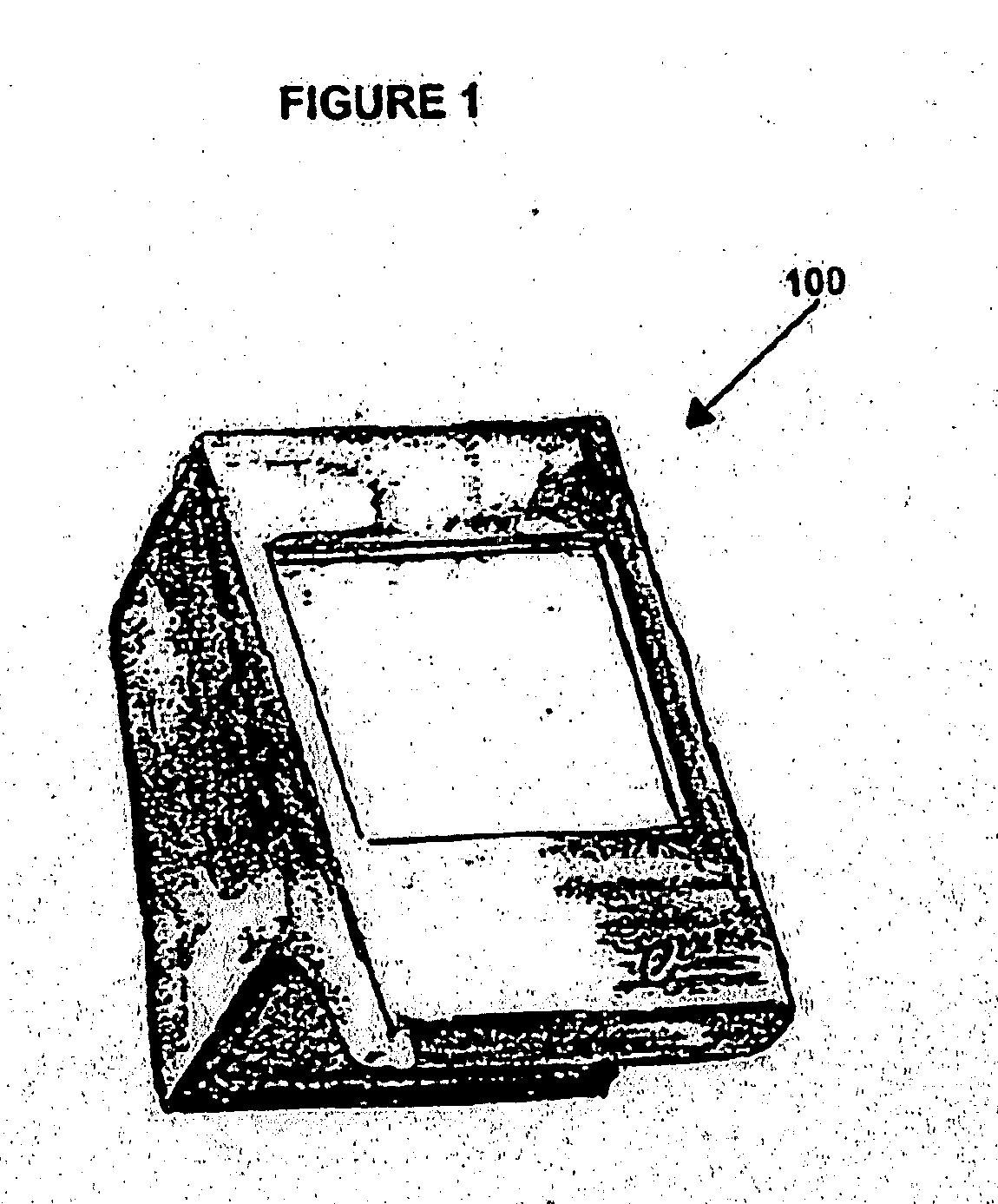Apparatus and method for detecting human fecal contamination on hands and other objects using an illumination imaging device
a technology of illumination imaging and human fecal contamination, which is applied in the field of methods and apparatus for detecting human fecal or other contamination, can solve the problems of multiple complicated and time-consuming methods, spread of harmful microorganisms, and difficulty in determining the accuracy of the detection results, so as to achieve the effect of small size, convenient and convenient use, and increased sensitivity
- Summary
- Abstract
- Description
- Claims
- Application Information
AI Technical Summary
Benefits of technology
Problems solved by technology
Method used
Image
Examples
example 1
[0037] One embodiment of the present invention 100 can be seen with reference to FIGS. 1-5. A perspective view of such an embodiment 100 is shown in FIG. 1. FIGS. 2a and b depict a typical user employing an embodiment of the present system 100 to inspect his hands, or any other object, for contamination. It is to be understood that the word “object” as used in this Specification is meant to include both a person's hands or body and non-skin items, such as utensils, work surfaces or tools, or even meat products.
[0038] The configuration of such an embodiment is shown in FIGS. 3 and 4, and includes a mounting structure 110 supporting a light source 120 capable of generating light in the visible range. Emission light from light source 120 can be created by an array of LED's, mercury vapor lights, fluorescent lamps any other source well-known to those in the art to be capable of generating light in the appropriate range. In one embodiment, the light is emitted and positioned so as to pe...
PUM
| Property | Measurement | Unit |
|---|---|---|
| wavelengths | aaaaa | aaaaa |
| wavelength | aaaaa | aaaaa |
| wavelengths | aaaaa | aaaaa |
Abstract
Description
Claims
Application Information
 Login to View More
Login to View More - R&D
- Intellectual Property
- Life Sciences
- Materials
- Tech Scout
- Unparalleled Data Quality
- Higher Quality Content
- 60% Fewer Hallucinations
Browse by: Latest US Patents, China's latest patents, Technical Efficacy Thesaurus, Application Domain, Technology Topic, Popular Technical Reports.
© 2025 PatSnap. All rights reserved.Legal|Privacy policy|Modern Slavery Act Transparency Statement|Sitemap|About US| Contact US: help@patsnap.com



